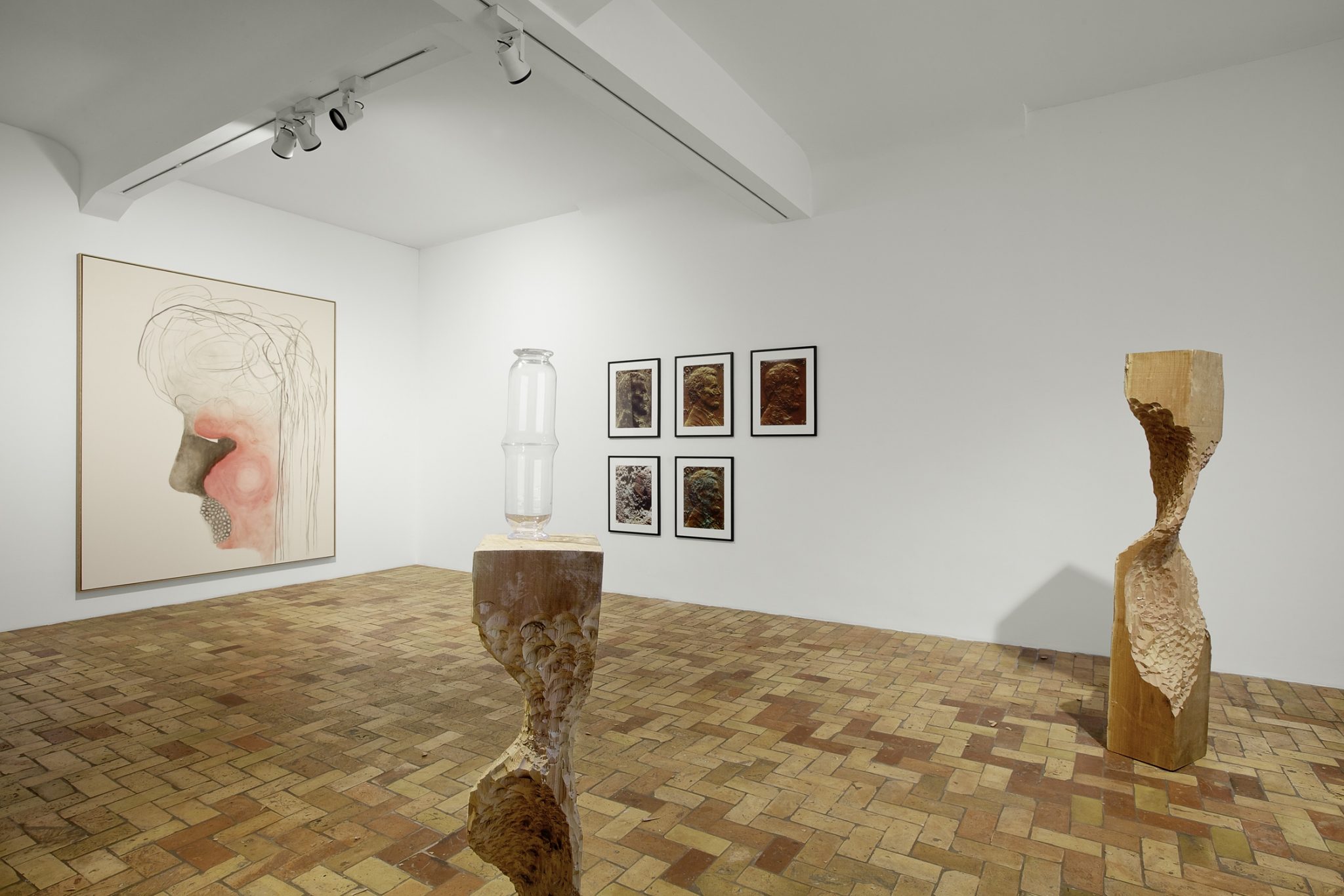For their widely unloved 1969 double album Ummagumma, Pink Floyd recorded the slice of varispeeded musique concrète that gives this 13-artist group show its protracted title. A cheery festival of chirps, giggles and rumbles, the track feels – between its appellation and its execution – at once ancient and modern. And as such, and beyond the presence of vintage Floyd stage speakers in the final room, it fits this ambitious exhibition. The track’s ‘voices’ are electronically produced but sound organic; and Several Species…, in parallel, is concerned with the human self, and how it might be perceived even when absent.
That’s addressed upfront in the opening room, where Aaron Curry’s hulking Phantom (2010), a planar sculpture whose architectonics suggest a man crossed with a bull and whose white surfaces are dashed with graffiti, revisits modernist conflations of the human and animalistic (see Picasso’s Guernica, 1937, for example) through a skateboarder’s eyes. Nearby are a very lengthily titled Gerard Byrne photograph dated 2010–13 depicting the verso of a painting of Christ and the Samaritan woman, and Nicholas Byrne’s painting Roleplay No 1 (2007–13), where flecked, Delaunay-ish chromatic tones surround a featureless head pitched between manifesting and dissolving. In each the human figure is spectral at best, almost a rumour; and the works of the Byrnes establish a mystic mood that’ll restate itself, amid halfway-articulated bodies, further in.
A quartet of large graphic woodcuts by Andrea Büttner, for example, depict a priestly figure (Father, 2010), tents and, in Bread Pebble (2010), a stone that, in this context, might transubstantiate. Laid out before these, poignantly stranded in a large area of floorspace, is Esther Kläs’s neo-postminimalist 0/2 (2013), a shallow, greyish concrete cast resembling a canoe or manger. Add another (again, too prolixly titled for this context) Gerard Byrne photograph from his 2008 series of artificially lit, unpopulated roadside images that visualise the staging described in Beckett’s Waiting for Godot, and the not-quite-there figure is reframed again. Now it might be that of God.
The spiritual, here, is pan-denominational if not outright nebulous, however. In Pietro Roccasalva’s You Raise the Blade, You Make the Change (2008), a loosely Baconesque painting of a bellboy is accompanied by a film canister containing the sequence in Tarkovsky’s icon-painter epic Andrei Rublev (1966) when a hot-air balloon rises, gifting the worldly controller of a lift – and ascent and descent per se – with metaphysical airs. That the everyday can draw us outside ourselves is reaffirmed nearby via Kōji Enokura’s sublime monochrome photographs of disproportionately poignant near-nothing events: creamy light on tarmac (p.w. – No 29, 1972) or, in Symptom-Floor, Water (p.w. – No 50) (1974), oddly geometric pooling liquid in what might be a hospital. The self notes such transitory sights, as we’ve all done in life, and brushes against something ineffable.
Yet such experience is interiorised and cannot be directly communicated, only gestured towards or framed, as in Manon de Boer’s Dissonant (2010), a film in which a dancer first listens twitchily to classical violin music and then dances in silence to her memory of it. Much else here clearly harkens back to Modernism and earlier, suggesting that abstract and semiabstract modes pioneered then offered a valid space for addressing barely articulable transcendent issues; and that, since these haven’t become irrelevant, the aesthetics might live on too. This subtle, carefully weighted show succeeds in asserting that. And in redeeming the self-indulgent sonic wasteland that is Ummagumma, it performs a minor miracle of its own.
This review was first published in the October 2013 issue.
